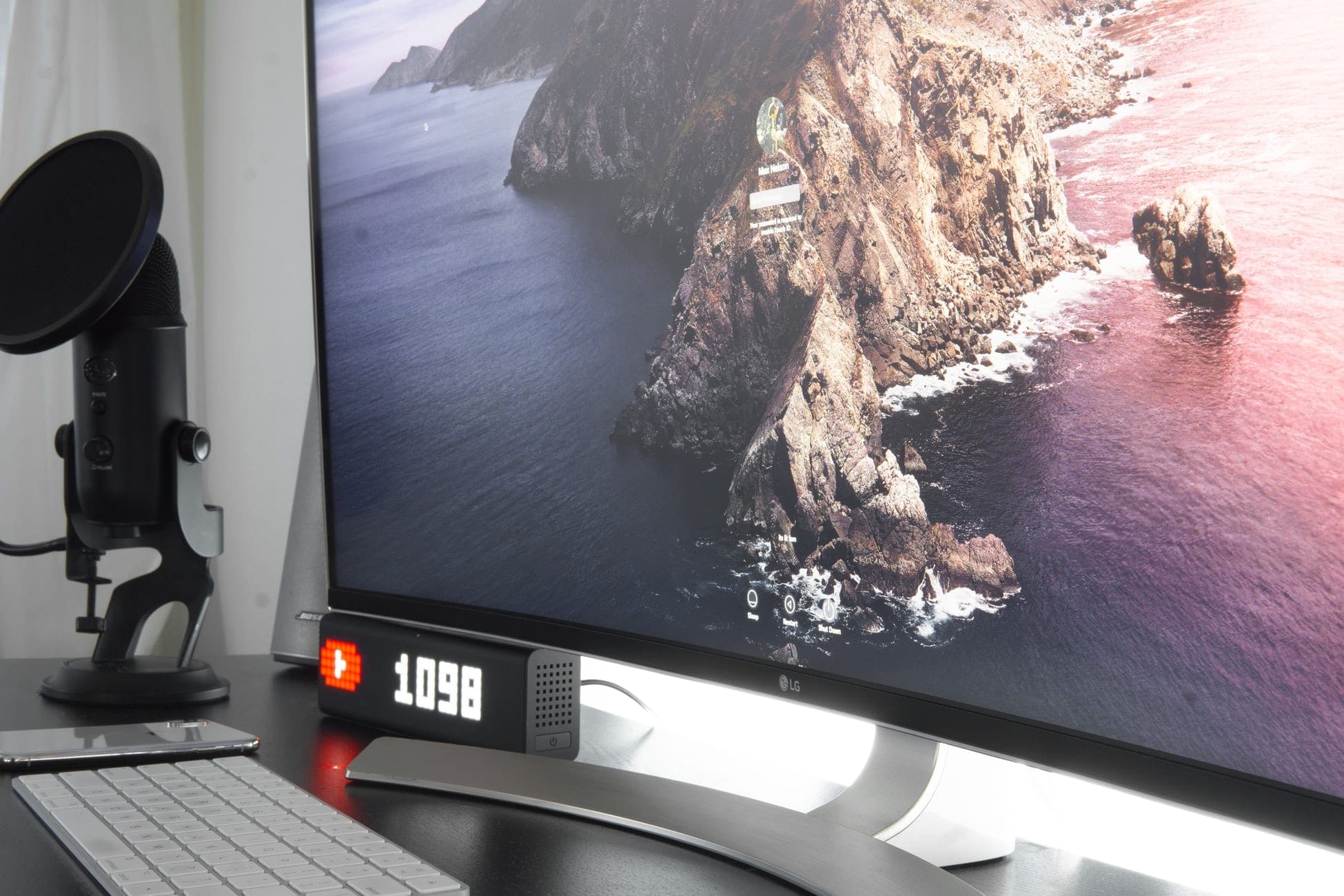There are things to consider when buying a product, including a monitor. Unlike the old days, monitors these days can have a lot of variation in specifications. These include resolution, response times, refresh rate, and even the curvature. You can choose to go with a flat or curved monitor. Along with 4K and HDR technologies, the curved monitor is a relatively recent innovation. It used to be much more expensive than it is now. With bent displays getting more and more affordable, it might be a good idea to start considering them if you haven’t already.
Nowadays, you can even find two monitors with similar specifications and prices with a single difference between them: one is flat, the other one is curved. What once seemed impossible in the past is now doable thanks to the fierce competition between major brands. We can expect monitors—flat or curved—to be less and less expensive in the future.
Without further ado, let’s take a look at some curved monitors’ advantages and disadvantages to help you decide if these curved displays are for you.
Advantages
Curved monitors enhance immersion
Increasing the level of immersion is the primary reason why more and more people are looking to buy a curved monitor. With a slightly bent display, the monitor gives you a more realistic visual experience.
You may already know this, but VR headsets work similarly. It bends the display in a certain way to help you get the immersion of living in a different world. Curved monitors also do this albeit to only a certain degree.
Ultra-wide curved monitors offer a more comfortable wide view
These two features go hand-in-hand when it comes to monitors. Ultra-wide gives you a wider field of view (FOW). This aspect will definitely improve your experience while gaming. More peripheral vision enhances immersion. Besides, it may help to improve gaming performance if you have more visual information to work with inside fast-paced games like an online first-person shooter.
Moreover, the curved angle of ultra-wide monitors can help mitigates the uncomfortable feeling caused by constantly looking at the edges of the display of the ultra-wide screen. This is the case as the distance from your eyes to the screen is different depending on where you are looking—edges of the display are farther than the center. The arc design of curved monitors offers the same viewing distance no matter where you look, reducing eye strain. The big screen in movie theaters also adopts the same method for an identical reason.
The curved screen may appear “cooler”
For some people, curved monitors also contribute to adding more aesthetic value to their PC setup. The concave surface is rather unique and gives a more futuristic feel. In addition, the setup of single ultra-wide curved monitors with large screen size is way better to look at rather than multiple flat monitors’ setup. The single ultra-wide setup is also great for gaming and watching movies.
Disadvantages
Curved monitors are still generally more expensive
Unfortunately, curved monitors are still typically more expensive than flat displays. This case is more apparent with ultra-wide curved monitors since we rarely see a cheap one in this category. This doesn’t often prove true with standard wide flat monitors which provide more options. If you mostly use your monitor for productivity or normal daily activities, you may want to invest for a flat monitor with a higher resolution or bigger screen instead for the same price.
Standard wide curved monitors may provide little benefits
These days, there is a bunch of monitors on the market that have a curved display but with only 16:9 aspect ratio instead of 21:9. These monitors are standard wide monitors—most modern monitors have the same aspect ratio or similar. A curved monitor at this aspect ratio provides little to no benefit to the user. The display bending is kind of pointless if your field of view is not that large in the first place. With that said, the price difference of some major brands’ flat and curved wide monitors with the same spec is not that big these days so you can still go ahead and buy one of these monitors if you fancy them.
Curved monitors are nice for gaming and watching movies, but maybe not for anything else
Curved monitors are highly possible in improving your gaming experience. However, in terms of productivity, these monitors likely have no added benefits to your working activity or may even hinder it. For example, Dimitri from Hardware Canucks explains that it is quite inconvenient to do video editing on a curved screen as everything on the display is rather distorted, making the straight lines from the video appear skewed. Despite that, he also mentions that a curved monitor is not super terrible for productivity if you know how to use it well.
Another disadvantage can also arise in viewing video content from YouTube or similar platforms. Most videos on the platform are in 16:9 aspect ratio so you will see black bars while watching them in 21:9 curved monitors. Fortunately, this is not the case for movies since most of them are perfectly compatible with ultra-wide monitors, making the experience even better. You can also expect more and more video content to support the 21:9 aspect ratio in the future. Alternatively, you may prefer a curved smart TV instead—which is cheaper—if you mainly use your display for media consumption.
Should I buy a curved monitor?
Curved monitors can most possibly improve your experience in gaming or watching videos. However, if you are building or upgrading a PC with a limited budget, it may be better to put your money into something else. Look for more added value such as a higher refresh rate display or a better graphics card instead.
Despite the budget, if for some reason you still want to have a curved monitor, there’s nothing really wrong with purchasing a standard 16:9 curved display that isn’t much more expensive than its flat counterparts. Although, keep in mind that you won’t likely get the same satisfaction from the ultra-wide curved monitors that way. If possible, it’s a good idea to visit a local monitor store and see first-hand how different curved monitors look. Then decide if one of the curved monitors there is suitable for you.




